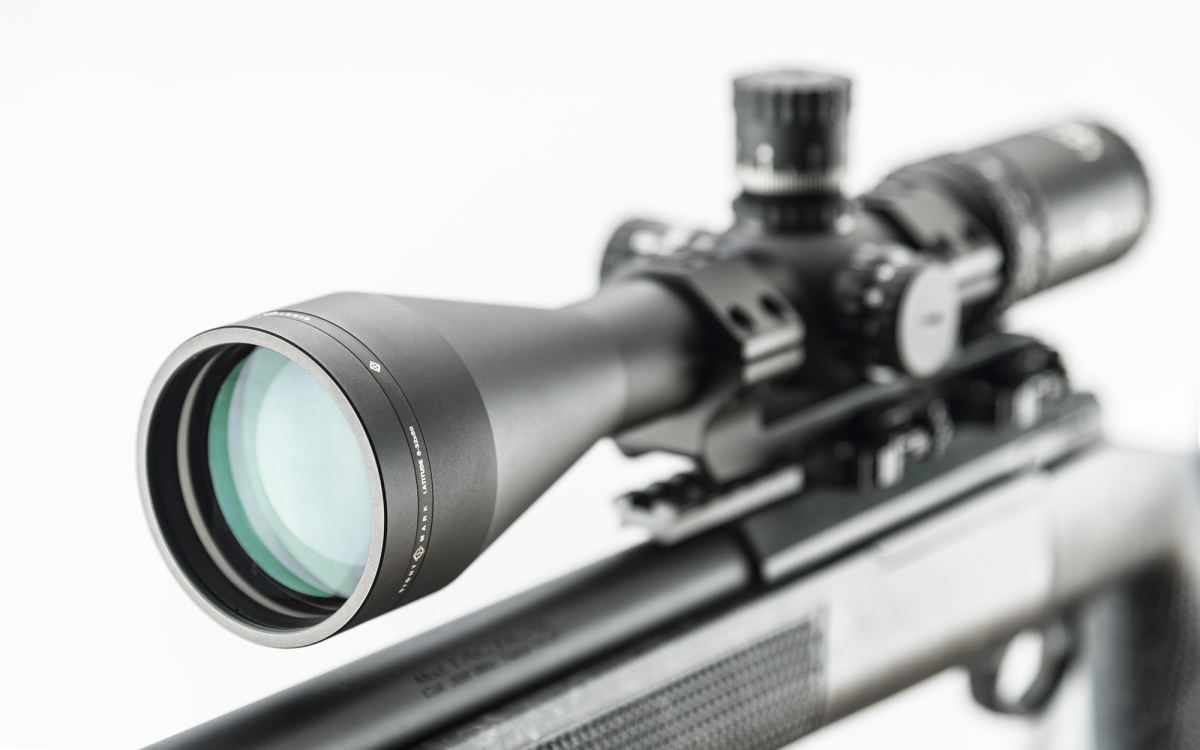Brightness in rifle scopes
When talking about rifle scopes, or binoculars, one of the words more frequently used is “brightness”, but there is often confusion about what determines an optics’ brightness.
If you ever chatted among friends and fellow shooters at a rifle range about optics, it’s almost certain someone brought up the subject of this or that scope, as being the bees’ knees in terms of brightness, which is how luminous the image in a scope or binoculars is. Unfortunately, there is often some confusion between what factors influence this property, which of those are dependent upon quality, and which are dependent upon inescapable laws of physics.
For brevity of exposition, we will talk about rifle scopes, but this applies to all optics, including binoculars, spotting scopes etc.
Brightness largely depends upon two main elements:
- the exit pupil diameter
- the quality of lens coatings.
The exit pupil is the image that is projected by an optic in the shooter’s eye.
You can easily see it by looking from a distance at the eyepiece of a scope as a luminous dot in the otherwise dark eyepiece lens.
The larger the dot, the brighter the image will appear, to a degree. The human eye’s pupil, in fact, varies in size from about 2 mm in broad daylight to about 8 mm in full darkness, at least for a young subject: the older we get, the less the pupil is able to adapt and, for a 40-45 years old, it may get no wider than 5-6mm.
THE EXIT PUPIL
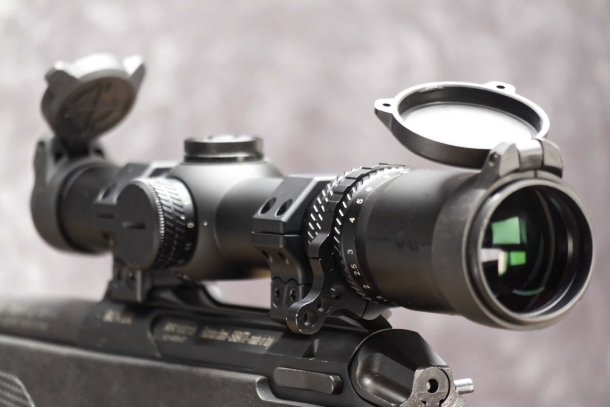
The green shine reveals the coatings on this Sightmark 1-10x25 eyepiece lens
In terms of brightness this means that if the exit pupil of the scope is smaller than your own pupil’s diameter, the image in the scope will appear darker, as it becomes a bottleneck for transmitted light.
As the exit pupils gets larger, the image will appear brighter, but an exit pupil larger than your eye’s pupil will bring no further benefit brightness-wise, as your own pupil is now the bottleneck; it can have other desirable advantages, like being more forgiving in terms of head positioning behind glass, which is useful in certain shooting conditions such as in a tactical, hunting, or dynamic shooting situation, but that’s all.
Unfortunately, we can not have any exit pupil we’d like in a scope, because its diameter is determined by laws of physics and, specifically, by the formula Ep=D/m, exit pupil equal diameter of the objective lens divided by the scope’s magnification. This is the reason why these values are always stated in an optics definition, such as 1-4x25 or 3-18x50: the first two numbers being the magnification power range of the scope, while the last being the objective lens diameter.
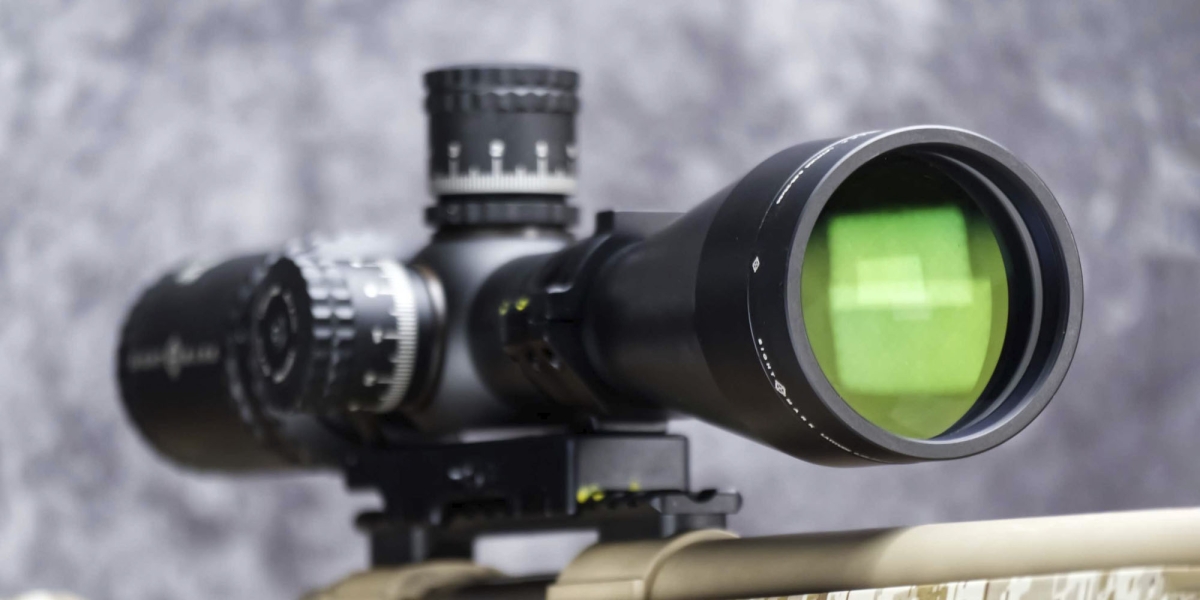
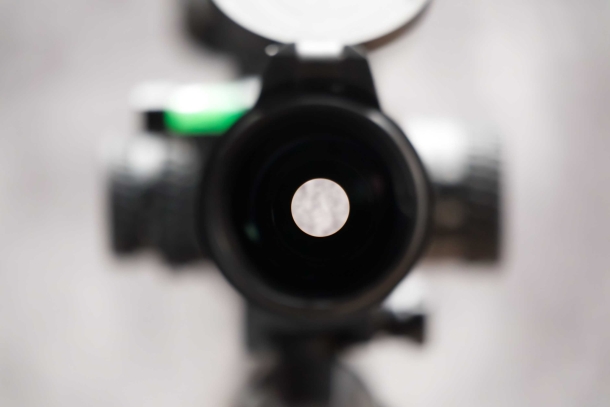
Exit pupil on a Sightmark Presidio 3-18x50 set at minimum power
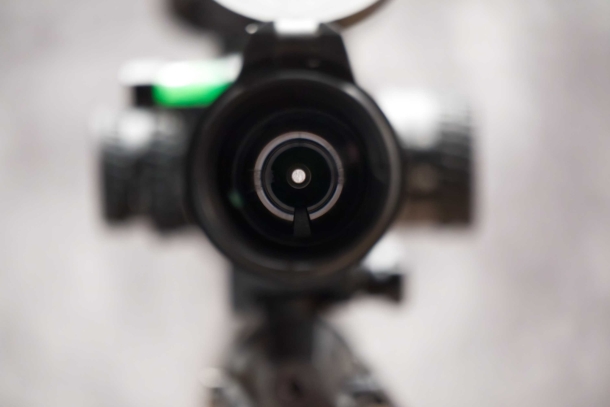
Exit pupil (just the center dot) on the same scope at maximum power
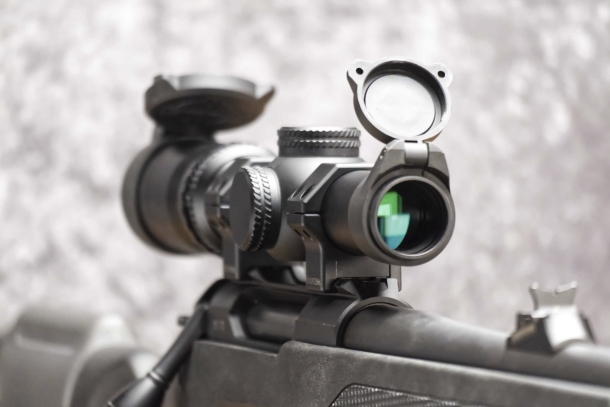
most LPVO do not have an objective bell. The 24 mm (about 1") objective is more than enough to offer good brightness
So, a 1-4x25 scope will have a 25 mm exit pupil at 1x, which is comfortable for use as a Red Dot Sight as it tolerates a lot of approximation in head placement behind glass (though not as much as a true RDS) while it has a 6.2 mm exit pupil at full 4x power, still adequate to handle almost any situation, even in low light conditions. This is the reason why you just see a tube, and no objective bell, on LPVO (Low Power Variable Optics): because a 6.25 mm exit pupil is plenty enough for almost any situation. Making the objective any larger would only make the scope pointlessly heavier and more cumbersome.
With the second scope in our example, at 3x the scope would get a 16 mm exit pupil, again useful for quick shots in hunting conditions for example, but at 18x you still get a useable 2,8 mm pupil, adequate to bright light conditions. Yes, this will appear dark in twilight conditions, and there’s no escaping that: no matter how high quality the scope is, it will still look dark for your eye, trying to gather more light with a fully dilated pupil.
To get a larger exit pupil you’d have to do one of two things: the first is getting a scope with a larger objective bell, say a 60 mm, that would yield a 3.3 mm exit pupil, but that would mean a larger, heavier, more expensive scope. The second is dialing down on magnification.
With its 60 mm objective bell, this Sightmark Latitude 8-32x60 has very good brightness, but high encumbrance as well
(Photo: Bruno Circi)
At 8x that same scope would have the same 6.25 exit pupil we have seen on the 1-4x25 at full magnification, which would give you about the maximum light throughput the scope can offer for all but the youngest eyes.
Most people often use pointlessly high magnification, as it gives the illusion of an easier shot. Accomplished shooters and snipers usually dwell in the low-to-middle magnification ranges of scopes, even for long range shooting. This allows to take full advantage of the scope brightness, among other things.
If you are over, say, 40 years old, bothering to get an exit pupil larger than about 5-6 mm to have a brighter image is pointless.
You could instead get away with higher magnification in twilight conditions before the image in your scope starts to dim. If the scope were to let through all the light gathered by the objective, this would be all that there is to say about scope brightness. Unfortunately, this is not so, by a long stretch.
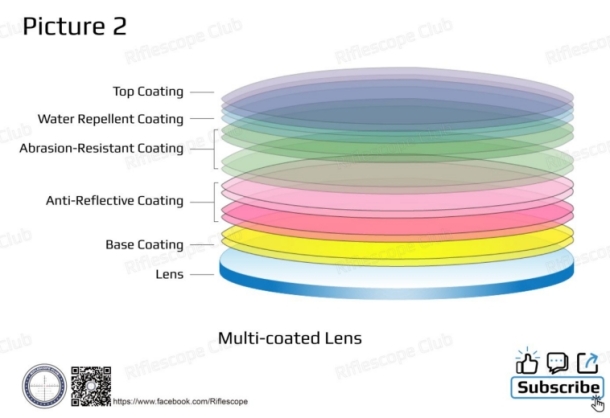
Lens coatings are not limited to light transmission, contributing to overall optical quality under many other aspects as well
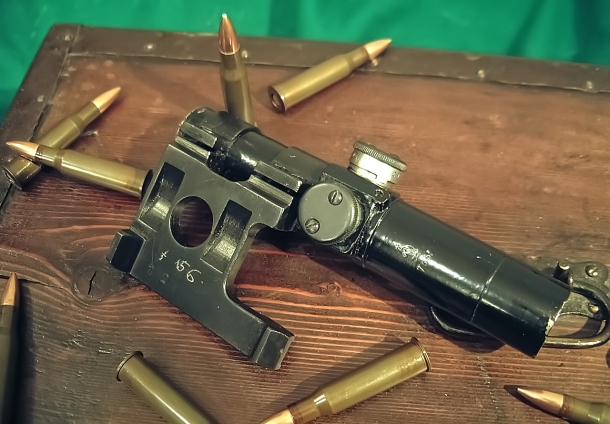
Older scopes, like this Soviet PU, didn't have any lens coatings, hence the low power and reduced number of lenses, to preserve brightness
ANTI-REFLECTIVE TREATMENTS
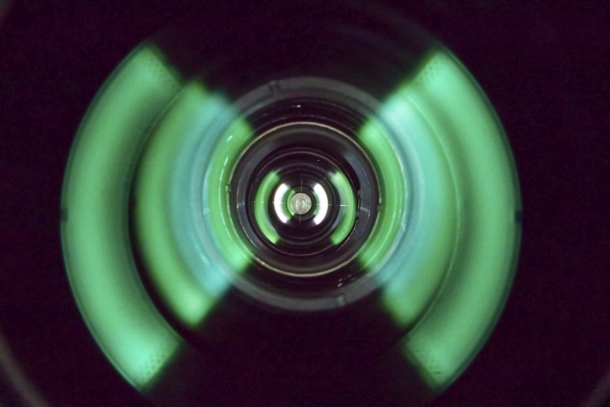
Each double bracket in the picture shows reflected light on a lens or lens group: there's a lot of them! You can also barely see the reticle.
IIdeally a scope would let all light gathered by the objective get to the eyepiece but, in the real world, not all the light gathered by the objective lens make it through to the exit pupil: ordinary glass looses about 4% of the light that strikes it per surface due to reflections: this means that a single lens, with two surfaces, will cause an 8% light loss.
A scope with plain lenses may end up letting through just 20-50% of the total light in the scene, depending on the number of lenses inside (this is one of the reasons why old maritime spyglasses presented an upside down image: the erector group was not used to save on the number of lenses used, making the spyglass brighter)
Here is where scope quality comes into play with lens coatings. Lens coatings are extremely thin dielectric material layers obtained by Physical Vapour Deposition (PVD) on the lens surface that give the lenses the greenish or violet hues we see reflected in scope objectives.
They can lower that 8% loss down to between 1% and tenths of a percent per lens, so that that same scope now can let through between 85% to 97% of total light!
That’s why lens coatings are so important…
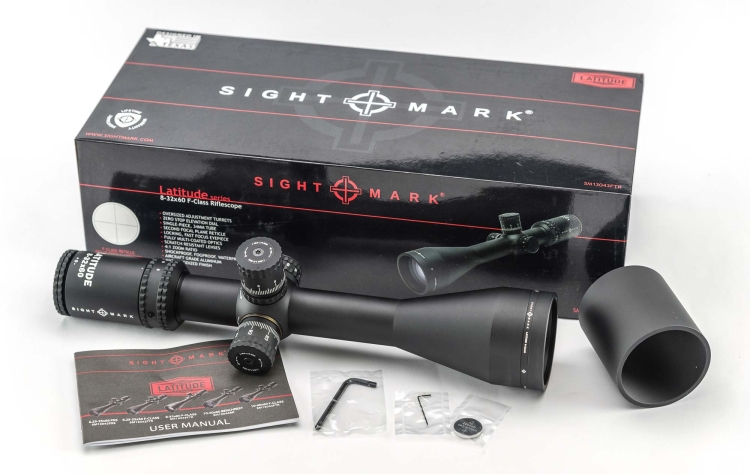
Today you do not need a fortune to get scopes with excellent brightness
(Photo: Bruno Circi)
Up until a few decades ago they were also shockingly expensive but, once again, modern technology has made affordable features that were precluded to all but the optics in the highest end of the price range, and what were once closely guarded industrial secrets protected by well defended patents are now public domain.
That doesn’t mean that optics manufacturers don’t have their secrets as they strive to squeeze another fraction of a percent from their coatings to gain an edge over their competitors, or that all optics are about the same, but the gap between an affordable rifle scope and top tier rifle scopes has narrowed considerably, brightness-wise.
The battle is now mostly fought in terms of truer color rendition, scratch resistance, UV and IR filtering to protect the shooter’s eye, more than in terms of transmitted light. The difference between a top tier optic and a more mundane one is still perceptible, though, as more lenses are used in higher class optics to correct for optical aberrations and get a better image with a wider power range: get enough lenses in the tube, and that fraction of a percent is multiplied enough times to be quite relevant.
SUMMING UP
Scope brightness depends upon two factors: first the exit pupil, which is an inescapable law of physics; second by lens coatings, which are where the manufacturers’ skill and scope quality really come into play.
Just keep in mind that the law of diminishing returns makes so that, as lens coatings improve, greater and greater effort has to be spent to gain smaller and smaller increments, and the difference in terms of brightness between a several hundred bucks scope and a several thousand bucks scope now is not nearly as big as it once was (even if there are other differences that go beyond the scope of this article).
In the end, unless you are young, you plan to use your scope in twilight conditions a lot, and you need a lot of magnification, it is very unlikely that you will ever really come to push the envelope of what most modern scopes offer in terms of brightness.



